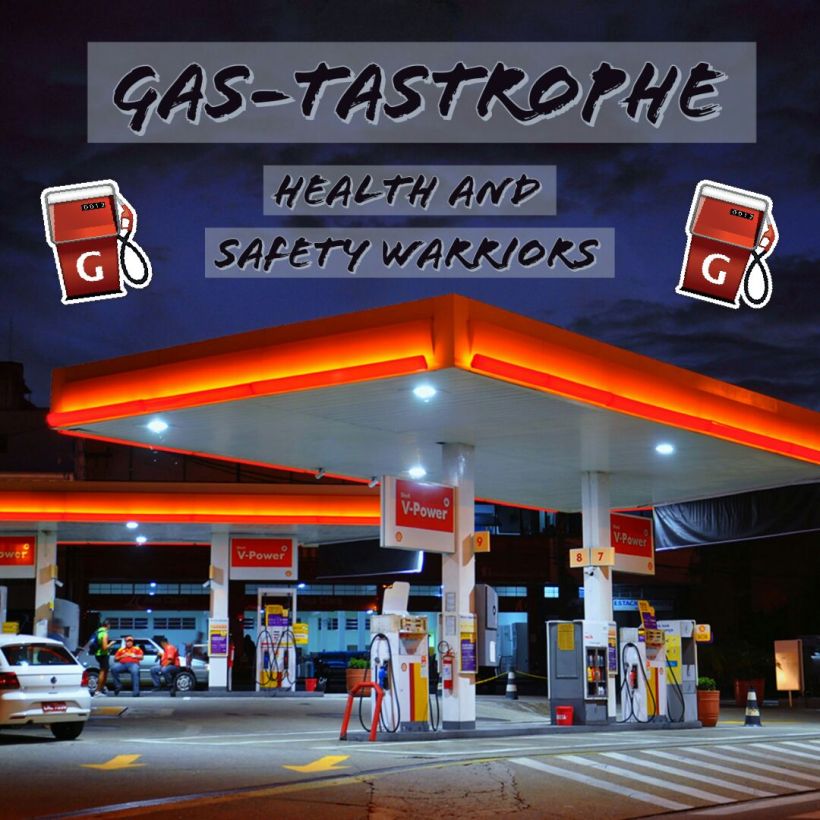
Major Hazards at Cunupia NP Gas Station
Trinidad houses an amalgam of diverse cultures and beautiful scenery and don’t talk about the food! As a people we practice acts of kindness, compassion and of course we practice our right to “get on bad” for carnival. Though these are such positive attributes of the citizens, we as a people fail to practice correct safety measures!
Trinidadians are laid back and always in a good mood, I mean how can we not be? After all we are islanders, unfortunately our laid-back nature has translated in our safety ethic and the lack thereof is seen all over, whether it being corporate companies, construction sites and believe it or not, even gas stations!
Now you are probably thinking, Gas stations? How could safety rules even be breached? How are there even hazards present in a gas station other than just not using “yuh” phone or smoking. I write this being utter flabbergasted myself, but there are MANY, MANY hazards present in a gas station, ones which can affect both the workers and the customers of the establishment.
In order to enlighten the citizens of Trinidad and Tobago and by extension other countries on the hazards and risks present at gas stations, an investigation on the hazards and risks present in the NP Gas station located in Cunupia, Trinidad was conducted. The investigation comprised of analyzing the risks and hazards present in said gas station. The results of this finding is discussed throughout this report, hazards included are: Fire, Physical, Psychological, Chemical, Ergonomic and Biological.
FIRE HAZARDS
A fire can be catastrophic and can cause harmful risk and destruction to the environment, infrastructure, and destroy businesses which can result in the loss of human lives causing enormous economic costs and psychological trauma.
A gas station fire can be equally catastrophic and is caused by highly flammable vapors that ignite from static electricity and heat in the atmosphere.
In visiting the gas station of interest, it was noted that several indications of fire hazard were evident on site. It was observed that fuel was soaked into the floor of the gas station probably from previous refills or spills which if heated by a spark or ashes from a discarded cigarette can easily ignite thus causing a fire, refer to figure 1. There are very visible signs which indicated no smoking or no cell phone use, yet however, can you believe that customers sat in their cars and still used their cell phones, with no regard or concern for themselves or other customers?
Additionally, on site there is a fuel storage tank located just beneath the surface of the service station floor containing highly flammable substance that is pumped via underground mechanism into customers vehicles. For this reason, persons are told to turn off their ignitions once they drive into the service station. Upon observance it was noted that one or two customers did not immediately turn off their engines upon pulling up to the gas service station which is very hazardous as heat vapors/fumes from overheated vehicle engines can send heat waves and static electricity into leaks located in the floor that can bleed into fuel storage that may cause an explosion. Refer to figure 3 for a better understanding of possible explosion hazards from leakages from underground storage.
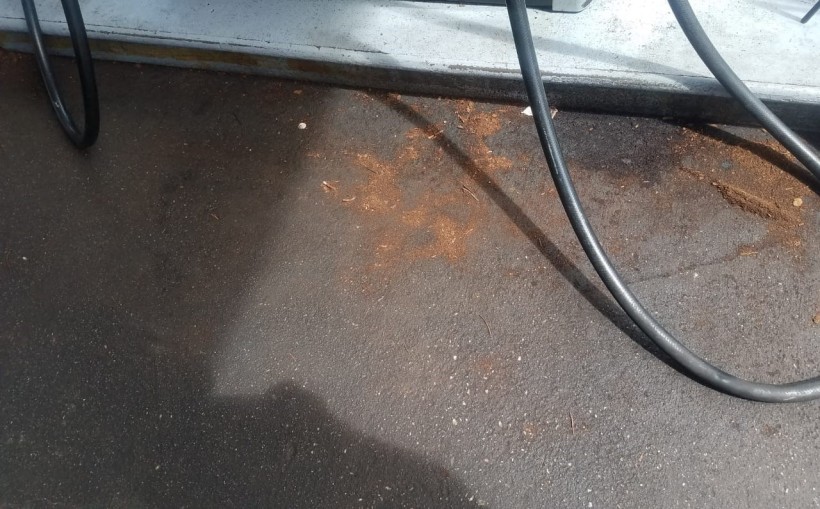 Figure 1: Photos shows fuel leaks onto floor of service station from overfull storage underground tank & spillages
Figure 1: Photos shows fuel leaks onto floor of service station from overfull storage underground tank & spillages
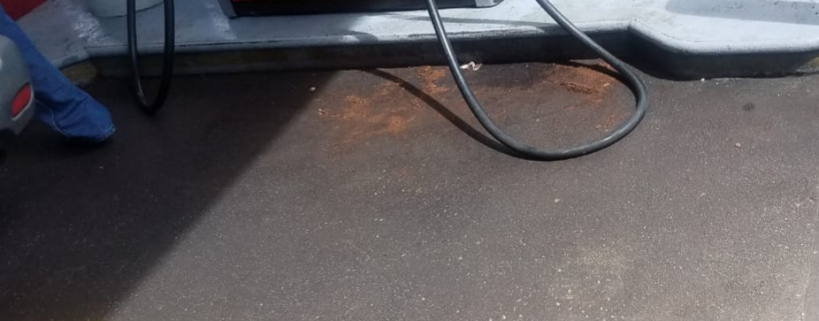
Figure 2 Gas spill/leak
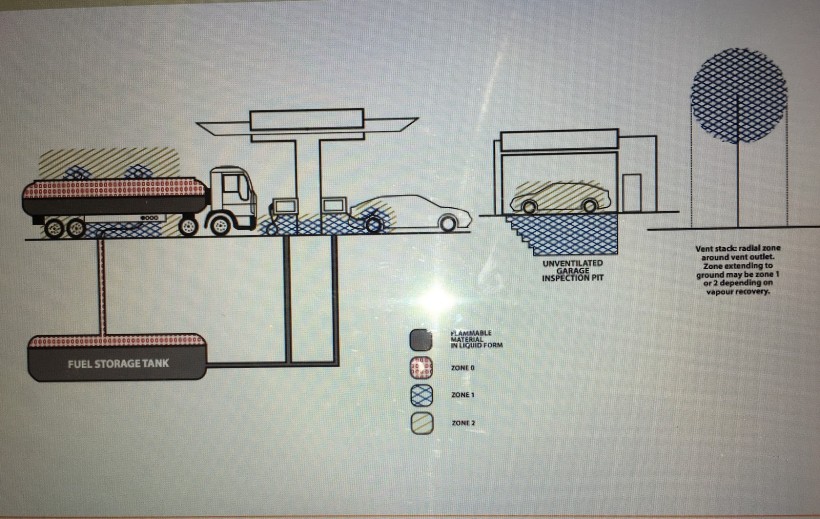
Figure 3: Example of side elevation of a petrol station illustrating hazardous area zones/underground fuel storage reservoir.
PHYSICAL HAZARDS
There are many physical hazards in a gas station. Some are very visible while others are not as visible. The first physical hazard that can be seen in the picture below is a gas spill on the ground. When fueling gas, it is a common occurrence that most drivers experience excess gas spills on the ground, this can cause customers and employees to slip and fall causing physical injuries. There are also times when drivers whose gas tank is on the left side of the vehicle will use a pump for a gas tank that is on the right. In this instance due to the distance it can cause gas spills causing the slips and falls.
In addition to the gas leaking when fueling from the wrong pump, if a vehicle is parked at a gas pump that fuels on the right side of a vehicle but the customers gas tank is on the left, the customer may have to maneuver the gas hose and this can cause a physical strain to the customer or pump attendant’s hand. The impact of this can cause the hand of the customer or pump attendant to be strained or injured.
Carpal Tunnel syndrome can be defined as a medical condition that causes numbness, pain and discomfort in the hand. This syndrome may be caused by continuous repetitive movements or by fluid retention. In most NP gas stations throughout Trinidad and Tobago there are gas attendants employed to assist customers in fueling gas. As a gas attendant the continuous pumping of gas can give the employee
Carpal Tunnel Syndrome.
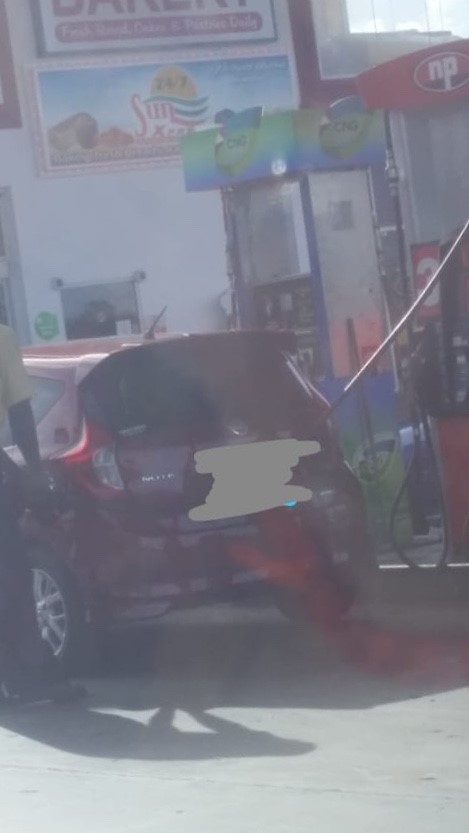
Figure 4 showing a customer fueling gas and pump customer using the wrong pump .
Another physical hazard that occurred in this gas station is trips and falls. There are many times when pump attendants and customer who fuel gas themselves may leave the gas pump hose carelessly scattered on the pathway, this may cause the same pump attendants and customers to fall if they are to trip on the loose gas hose.
The final point on physical hazard is that of bad posture when fueling gas. It has become a habit of many drivers to bend their back in a strenuous posture that causes physical harm to their back and can cause strain to their spinal cord as well. This issue may not directly hurt customers who fuels gas once per week as compared to the pump attendants that fuels gas for hundreds of customers on a daily basis.
Some physical hazards can be avoided if pump attendants, customers and owner of each gas station take interest and initiative in up keeping the gas stations and ensuring that it is safe for operations.
PSYCHOLOGICAL HAZARDS
A psychological hazard is any hazard that affects the mental well-being or mental health of a worker by overwhelming their individual coping mechanisms and impacting the worker’s ability to work in a healthy and safe manner. At the site, it was observed that the cashier is secluded away from all other employees, veiled behind a heavily tinted window, inside a tightly fitted booth. It is therefore noted that a scenario as this can illicit symptoms of claustrophobia that can hinder and deter that employee’s work performance. Claustrophobia is an anxiety disorder, in which sufferers can experience panic attacks founded upon the fear of having no escape or being closed in. This can be detrimental to an employee and their mental well-being having to encounter these experiences on a daily basis, if not brought to light and remedied.
Additionally, workplace stress can impact on an employee’s psychological health. Workplace stress at the gas station can be caused by negative interactions with clients and customers while attending to their needs. Drivers may show up at the gas station, faced with their individual issues and challenges, which may manifest itself via negative attitudes vented toward pump attendants, resulting in a chain reaction, with the pump attendant facing psychological issues due to workplace stress.
Furthermore, the workers at the gas station are susceptible to the threat of violence from the public which can create a fear of minimal sense of security. The gas station, being a largely open structure, leaves employees open to attacks from criminal elements as there is no security presence on site. The safety of the aforementioned cashier’s booth can become a structure in which one can become trapped in an emergency situation, thereby inhibiting Post Traumatic Stress Disorder (PTSD).
Furthermore, because of the constant stream of traffic into the gas station, employees are thus exposed to some level of noise on a daily basis. This can range from a gentle disturbance such as chitter-chatter amongst customers and staff, to heavy annoyance from vehicular engines and blaring of vehicle horns and alarms. Infrequent occurrences of this may be tolerated, but to encounter these noises on a daily basis can leave employees susceptible to its effects. Effects such as irritability and headaches can impact upon workers’ quality of life, thereby diminishing their productivity at work.
CHEMICAL HAZARDS
Hazardous chemicals in the workplace are substances, mixtures and materials that can be classified according to their health and physicochemical risks and dangers (Comcare). A wide range of health hazards are caused by chemicals and toxic substances. A few chemical hazards were noticed at the NP gas station. These hazards can affect the customers, employees and the general environment.
The first chemical hazard that was seen was gas spills. These spills can be a result of refilling your vehicle’s’ gas tank and over filling them; the gas flows from the tank of the car to the ground. It can also result through leakage from the gasoline nozzle when replacing the nozzle to the station. The leakage of the gasoline and diesel contains harmful chemicals including benzene, a known human carcinogen. Did I mention that ‘Benzene is highly flammable’? It also evaporates into the air also causing another hazard. These droplets of gas can cause a fire hazard if it comes into contact with any flames such as smoking. The gas spills leave a stain on the pavement and it can be seen around all pump stations. It’s almost certain that it can be seen in all gas stations. Over inhalation of benzene can result in drowsiness and can damage the immune system by changing someone’s blood level. “Yes, that’s right!” This poses a big threat to all employees as they are exposed to this hazard on a daily basis.
Another hazard that was seen was spillage/leakage of oil from parked cars awaiting to be serviced. These oils can cause someone to skid or even cars to skid, which can cause slips and falls, a skidding accident or even a fire if heated.
In order to prevent these hazards from occurring, customers should take caution while refilling their vehicles and stop the gas from automatically filling when the tank is almost filled. This can prevent leakage and spills on the ground.
Figure 5: showing oil leakage from parked cars
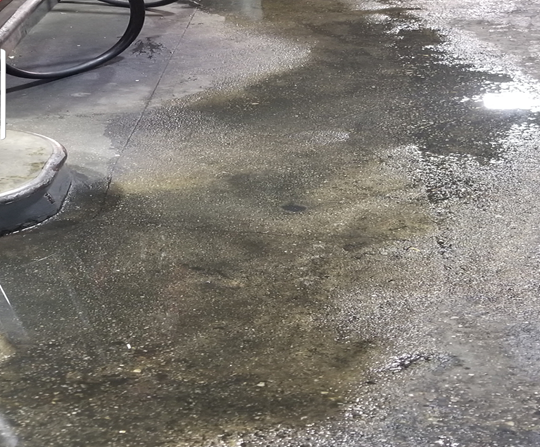
Figure 6: showing water and fuel around pump station
ERGONOMIC HAZARD
An ergonomic hazard is a physical factor within the environment that harms the musculoskeletal system. Ergonomic hazards include themes such as repetitive movement, manual handling, workplace/job/task design, uncomfortable workstation height and poor body positioning. During our visit to Np gas station, we observed that the cashiers were slouching in their chairs and extending their arms to receive payment repetitively- being in this position for a regular 8 hour shift can have adverse effects on the bodies of the cashiers. The poor posture can result in back aches and swollen ankles which can jeopardize the employees’ health.
BIOLOGICAL HAZARDS
A biological hazard can be defined as, an organism or substance produced by an organism that is able to pose as a threat to human health. It can be anything that is able cause harm to people or animals. These hazards are most commonly found in workplaces that include conditions such as: unsanitary environments, working around or with other people, labs , and in the environment. (safetylineworker.com)
Some examples of biological hazards are:
- Body fluids
- Sewage
- Bacteria and viruses
- Parasites
- Fungi
These sources can be hazardous to human health and result in effects such as infections and diseases.
While performing a risk assessment at the NP gas station, a biological hazard was identified. While on the site, one of the employees was asked if there was a bathroom on the premises that was available for use. It was then noted that the employees did not have proper or sanitary bathroom facilities. It was then seen a while after that the employees often go to a neighbouring location to access proper bathroom facilities.
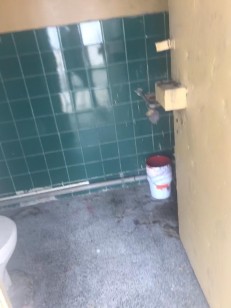

Figure 7: shows inadequate bathroom facilities
The images above are pictures of the improper and unsanitary bathroom facilities that are available to the employees of the gas station. The bathroom is not properly ventilated. In addition to that, there is no sink for the employees to wash their hands afterwards. Also, there is a leak in the ceiling, hence the bucket that was placed in the corner on the floor to catch the dripping water.
With reference to the lack of a sink in the bathroom. The employees interact with each other and touch the gas pumps all day, if any of the employees at work have an illness or disease, the absence of a sink makes those illnesses and diseases a lot more transferable to both the employees and the customers.
Toilets are known to be a playground for germs as there tends to be an abundance of germs that linger. The floor, the toilet seat, and even the doorknob act as transmitters of germs and harmful bacteria such as gut infections, lung and skin infections, viral infections and Sexually Transmitted Diseases (STD).
REFERENCES
Chemical hazards. Comcare.gov.au. Accessed 05 October, 2018. https://www.comcare.gov.au/preventing/hazards/chemical_hazards
Comcare.gov.au. (2018). Ergonomic hazards. [online] Available at: https://www.comcare.gov.au/preventing/hazards/ergonomic_hazards [Accessed 17 Oct. 2018].
Safety and Health Topics | Chemical Hazards and Toxic Substances | Occupational Safety and Health Administration. Osha.gov. Accessed 05 October, 2018. https://www.osha.gov/SLTC/hazardoustoxicsubstances/
“Workplace Hazards Series: Biological Hazards.” SafetyLine. April 25, 2017. Accessed October 17, 2018. https://safetylineloneworker.com/blog/workplace-hazards-series-biological-hazards/.
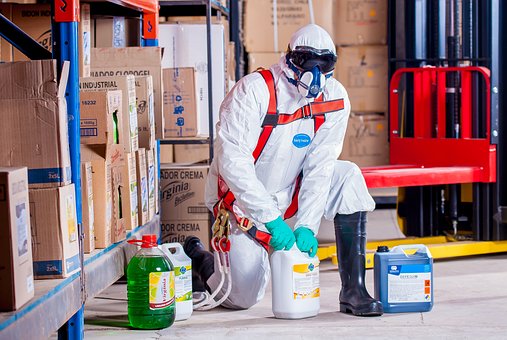


November 12, 2018 at 10:21 am
What a catchy name of this blog. I do agree that the hazards posed in the country’s gas stations are many and us as Trinidadians tend to overlook these dangerous hazards which could lead to so much risks and dangerous outcomes. Chemical Hazards in particular are commonly present in gas stations all over the country. I often see an abundance of chemical fluids on the floor at these gas stations with no attention being paid to this problem. These fluids could be easily cause chemical burns through inhalation. This can also pose a fire hazard, if lit these fluids can cause a huge explosion or fire.
LikeLike
July 2, 2019 at 9:57 pm
How many falling Hazard are there?
LikeLike